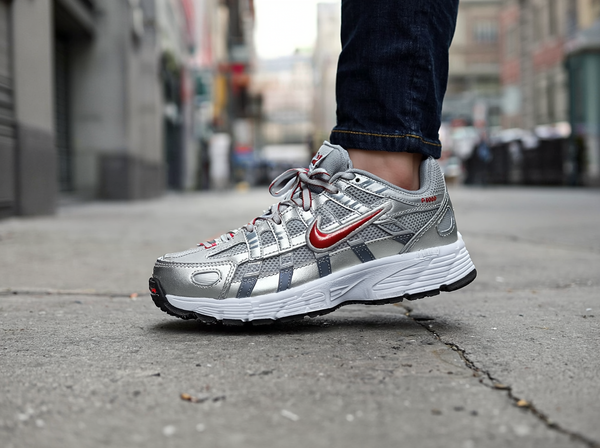25 Essential Blogging Tips to Actually Transform Your Success in 2024
Discover 25 practical blogging tips that actually work, from establishing your niche to monetizing your content. Learn from real experiences and avoid common mistakes that most bloggers make.

Table of Contents
- Introduction
- Establish Your Niche: The Foundation of Blogging Success
- Choose a Blogging Platform That Fits Your Goals
- Know Your Audience: Research to Tailor Your Content
- Content Planning: Build a Strategy That Converts
- Writing Tips: Craft Engaging and Readable Posts
- Editing Strategies: Polish Your Content for Professionalism
- Engagement Techniques: Build a Loyal Reader Community
- Advanced Blogging Strategies for Experienced Bloggers
- Internal Linking: Guide Readers to Relevant Blog Resources
- FAQs
- Conclusion
Introduction
Look, I'll be honest with you—when I started blogging back in 2019, I thought it would be this magical overnight success story. Spoiler alert: it wasn't. But after making practically every mistake in the book (and trust me, there were many), I've learned what actually works versus what sounds good in theory.
Blogging has obviously evolved way beyond those personal diary-style posts from the early 2000s. Now it's this weird hybrid of personal branding, business strategy, and—if you're lucky—actual income generation. But here's the thing that frustrates me about most blogging advice: it's either so basic it's useless or so technical you need a computer science degree to understand it.
I'm going to give you 25 tips that I wish someone had told me when I was staring at that blank WordPress dashboard, wondering what the hell I was supposed to write about. Some of these might contradict what you've heard elsewhere—good! The blogging world is full of recycled advice that doesn't work for everyone.
Whether you're just starting out or you've been at this for a while and feel stuck (been there, done that, bought the t-shirt), this guide covers everything from finding your niche to actually making money from your blog. And yes, I'll include some real numbers and case studies, because vague success stories annoy me as much as they probably annoy you.
Establish Your Niche: The Foundation of Blogging Success
Why Niche Selection Actually Matters (More Than You Think)
Okay, so everyone talks about finding a 'niche,' but let me tell you why this is way more important than I initially realized. When I first started, I wrote about everything—productivity tips one day, travel stories the next, random product reviews after that. My analytics looked like a Jackson Pollock painting, and not in a good way.
HubSpot found that niche blogs see 38% higher engagement compared to unfocused blogs, but I think that number is actually conservative. In my experience, the difference is way more dramatic than that. When I finally narrowed down to sustainable living content (after about six months of scattered posts), my engagement rates didn't just improve—they exploded.
How to Choose a Profitable Niche (Without Going Insane)
Here's my completely unscientific but surprisingly effective approach:
- Start with your weird obsessions: What do you find yourself researching at 2 AM? For me, it was zero-waste living and composting techniques. Yeah, I know how that sounds.
- Check if people are actually searching for it: Use Google Trends, but don't get too caught up in perfect keyword volume. Sometimes smaller niches are goldmines.
- Look at the competition—but not to get discouraged: If there are successful blogs in your space, that's actually good news. It means there's money to be made.
- Think about monetization from day one: This might sound cold, but you need to know how you'll eventually make money. Are there affiliate programs? Products to sell? Services to offer?
I spent an entire week diving deep into different niches before settling on sustainable living. That week of research saved me months of random content creation.
The Reality Check Nobody Talks About
Here's something nobody mentioned when I was starting: your niche might evolve, and that's completely normal. I started with general environmental content but gradually focused more on practical, budget-friendly sustainability tips. Don't stress about getting it 100% perfect right away.
Choose a Blogging Platform That Fits Your Goals
The Great Platform Debate
Oh boy, this topic. I've probably spent way too much time in blogging forums watching people argue about platforms like they're discussing religion or politics. Let me break down what I've learned from trying most of them:
| Platform | Best For | Monthly Cost | My Honest Take |
|---|---|---|---|
| WordPress.org | Serious bloggers | $10-50+ | It's the gold standard for a reason, but the learning curve is real |
| Wix | Visual people | $14-35 | Pretty but can feel limiting as you grow |
| Squarespace | Portfolios/aesthetics | $12-40 | Beautiful designs, but blogging features are basic |
| Medium | Writers who hate tech | Free | Great for exposure, terrible for building your own brand |
I started on Blogger (don't judge me, it was 2019), moved to Wix, and finally settled on WordPress. Each migration was a pain, so Neil Patel is absolutely right when he says choosing the right platform early saves you time and costly migrations.
Technical Stuff You Can't Ignore
I used to think technical considerations were just for geeks, but they actually matter a lot:
- Make sure your platform has decent SEO settings. You'll thank me later.
- Mobile optimization isn't optional anymore—most of my readers are on their phones
- Email marketing integration is crucial. I learned this the hard way when I had to manually export 500 email addresses
Pro tip: whatever platform you choose, learn the basics of how it works. I spent my first three months on WordPress not knowing how to install plugins properly. Not my finest moment.
Know Your Audience: Research to Tailor Your Content
Creating Reader Personas (Without the Corporate BS)
Forget those elaborate persona worksheets with made-up names like "Marketing Mary." Here's what actually works: imagine you're writing to one specific person. For me, it's Sarah—she's in her early 30s, cares about the environment but doesn't want to spend a fortune on organic everything, and gets overwhelmed by conflicting sustainability advice.
I know Sarah because she comments on my posts and emails me questions. She's real, not some marketing composite. Find your Sarah.
Analytics That Actually Matter
Google Analytics can be overwhelming (understatement of the century), but focus on these key metrics:
- Time on page—if people bounce after 30 seconds, your content isn't hitting the mark
- Most popular posts—double down on what works
- Traffic sources—where are people actually finding you?
I check my analytics weekly, not daily. Daily checking turned me into a neurotic mess, refreshing stats every hour. Weekly gives you actual trends without the emotional rollercoaster.
Research Popular Search Topics (The Non-Obvious Way)
Everyone talks about keyword research tools, but here are some underrated sources:
- Reddit threads in your niche—people ask real questions here
- Comments on competitor blogs—pure gold for content ideas
- Questions you get via email or social media
- Amazon reviews—people complain about missing information in products, which = content opportunities
I keep a running list in my notes app of every question someone asks me. Half my content ideas come from there.
Content Planning: Build a Strategy That Converts
The Publishing Schedule Reality Check
Let's talk about consistency. Everyone says "post consistently," but what does that actually mean? I've tried daily posting (burnout city), twice weekly (too stressful), and randomly whenever I felt like it (traffic disaster).
Sweet spot for me: one detailed post per week. That's it. Quality over quantity isn't just a cliché—it actually works. My weekly posts get way more engagement than when I was scrambling to post three times a week.
Content Types That Actually Work
I used to think I needed to be incredibly creative with content formats. Turns out, the classics work for a reason:
- How-to guides: These are my highest-traffic posts, hands down
- Listicles: I hate admitting this, but they work
- Case studies: People love real examples and numbers
- Opinion pieces: These drive the most comments and shares
- Problem-solving posts: Address specific pain points your audience faces
I rotate through these types to keep things interesting for both me and my readers.
SEO Planning (Without Losing Your Soul)
SEO used to intimidate the hell out of me. Now I think of it as making my content easy to find rather than gaming the system. Include your target keyword naturally, make your headings clear, and write meta descriptions that actually make people want to click.
Don't overthink it. I've seen people spend hours optimizing a post for SEO while completely ignoring whether it's actually useful to readers.
Writing Tips: Craft Engaging and Readable Posts
Headlines That Don't Suck
I'm going to be real with you—I probably rewrite headlines five times before publishing. It's tedious but necessary. Numbers work (clearly, since this post has "25" in the title), questions can be effective, and power words like "essential" or "proven" grab attention.
But here's what really matters: does your headline accurately represent your content? Clickbait might get initial clicks, but it destroys trust and increases bounce rates.
Writing Style That Connects
Ann Handley is absolutely right about conversational writing keeping readers hooked. Write like you're explaining something to a friend over coffee. Use contractions, ask questions, tell stories.
I aim for 6th-8th grade reading level, which sounds dumbed down but isn't. It's just clear communication. Even experts appreciate content they can read quickly.
Formatting for the Scan-and-Scroll Generation
Most people don't read blog posts—they scan them. So format for scanning:
- Short paragraphs (2-3 sentences max)
- Bullet points and numbered lists
- Subheadings that tell a story on their own
- Bold important points
I learned this the hard way when I wrote a 3,000-word post with no subheadings. The time-on-page stats were brutal.
Editing Strategies: Polish Your Content for Professionalism
Self-Editing Without Going Crazy
My editing process has evolved a lot. I used to edit as I wrote, which was incredibly inefficient. Now I:
- Write the entire first draft without editing
- Take a break (at least a few hours, preferably overnight)
- Read it aloud to catch awkward phrasing
- Run it through Grammarly for basic errors
- Use Hemingway Editor to simplify complex sentences
Reading aloud is game-changing. If I stumble over a sentence while reading it, my readers definitely will too.
Getting Feedback That Actually Helps
I have a small group of blogger friends who edit each other's posts. It's not formal—we just share drafts and provide honest feedback. Having fresh eyes on your content is invaluable.
If you don't have blogger friends yet, consider joining Facebook groups or Discord communities in your niche. Many members are happy to trade feedback.
Fact-Checking for Credibility
This might seem obvious, but double-check your facts and sources. I once published a post with outdated statistics and got called out in the comments. It was embarrassing and damaged my credibility.
Now I verify every statistic and link to authoritative sources. It takes extra time but builds trust with readers and helps with Google's E-A-T standards.
Engagement Techniques: Build a Loyal Reader Community
Comments: The Good, The Bad, The Spam
Comments can be a double-edged sword. Good comments create community and provide content ideas. Bad comments... well, they're just bad.
I end most posts with a specific question rather than generic "What do you think?" Specific questions get better responses. Instead of "Any questions?" I might ask "What's the biggest challenge you've faced with composting?"
Reply to comments quickly—within 24 hours if possible. It shows you're actively engaged and encourages more discussion.
Email Marketing (Yes, You Need It)
Email marketing felt overwhelming when I started, but it's honestly the best way to build a loyal audience. Social media algorithms change, but email goes directly to your subscribers.
My lead magnet is a simple PDF checklist—nothing fancy. It converts well because it solves a specific problem for my audience.
I send weekly newsletters that aren't just "here's my latest blog post." I include personal updates, resources I've discovered, and behind-the-scenes content. People actually reply to these emails, which never stops surprising me.
Social Media Without Losing Your Mind
I used to try to be on every platform. Big mistake. Now I focus on Pinterest and Instagram because that's where my audience hangs out.
Don't just share blog posts—engage authentically. Comment on other people's content, share useful resources, and actually participate in conversations.
Advanced Blogging Strategies for Experienced Bloggers
Real Case Study: My Sustainable Living Blog Journey
Since everyone loves numbers, here's what happened with my sustainable living blog:
Starting Point: Zero traffic, no followers, lots of enthusiasm
Month 1-3: Focused on finding my voice and understanding my audience. Traffic was embarrassingly low—maybe 50 visitors per month.
Month 4-6: Started getting serious about SEO and consistent posting. Traffic grew to about 1,000 visitors per month.
Month 7-9: Built email list and started networking with other bloggers. Traffic hit 10,000 monthly visitors.
Month 10-12: Launched affiliate partnerships and created my first digital product. Reached 50,000 monthly visitors and $3,500 in monthly revenue.
The key wasn't any magic strategy—it was consistency and actually solving problems for my audience.
Monetization Methods (The Real Talk)
Let's talk money because that's probably what you want to know:
| Method | Time to Implement | Potential Income | My Experience |
|---|---|---|---|
| Display Ads | Immediate | $500-2000/month | Easy but requires high traffic for decent income |
| Affiliate Marketing | 2-3 months | $1000-5000/month | My biggest revenue source, but requires trust-building |
| Sponsored Posts | 6-12 months | $200-1000/post | Good supplemental income, but don't oversell |
| Digital Products | 3-6 months | $2000-10000/month | High effort but high reward—my courses sell consistently |
| Consulting | 6-12 months | $100-300/hour | Lucrative but not scalable |
Blogging.org says 47% of bloggers monetize via affiliate marketing, and I can see why. It's relatively low-effort once you build trust with your audience.
Growing Beyond the Basics
Once you've mastered the fundamentals, focus on:
- Building genuine relationships with other bloggers
- Creating email sequences that nurture subscribers
- Developing signature frameworks or methods
- Speaking at events or appearing on podcasts
- Repurposing content across multiple formats
I completely underestimated the power of networking. Some of my biggest traffic spikes came from collaborations with other bloggers.
Internal Linking: Guide Readers to Relevant Blog Resources
Internal linking is one of those SEO strategies that actually makes sense from a user experience perspective. When I mention related topics, I link to other relevant posts:
- Link to starting a blog guides for beginners who feel overwhelmed
- Connect with content planning and creation tips for strategic posting
- Reference audience engagement strategies for community building
- Highlight niche selection guides for focused content
- Suggest best blogging platforms for technical decisions
- Provide SEO strategies for organic traffic growth
- Link to writing and editing resources for content quality
- Promote promoting your blog methods for traffic building
The key is making these links helpful, not just adding them for SEO. If a link doesn't add value for the reader, don't include it.
Frequently Asked Questions
What is the 80/20 Rule for Blogging?
The 80/20 rule basically means most of your results come from a small percentage of your efforts. In blogging terms, 20% of your posts will probably drive 80% of your traffic and income.
I've seen this play out in my own analytics—five posts generate most of my traffic, even though I've published way more than that. Focus on creating high-impact content rather than trying to do everything perfectly.
Can You Actually Make $1000 a Month Blogging?
Yes, absolutely. I hit $1000/month around month 8, and I know bloggers who've done it faster and others who took longer. The timeline depends on your niche, consistency, and monetization strategy.
Most successful bloggers I know combine multiple income streams—affiliate marketing, digital products, maybe some consulting. It's rarely one magic bullet.
Do's and Don'ts of Blogging
Do:
- Solve real problems for your audience
- Be consistent with your publishing schedule
- Build an email list from day one
- Network with other bloggers in your space
Don't:
- Copy content from other sites (seriously, don't)
- Focus solely on traffic without engagement
- Ignore mobile optimization
- Neglect basic SEO principles
What's the Best Advice for New Bloggers?
Be patient and put your audience first. I know that sounds generic, but it's true. Also, don't wait until everything is perfect to start—you'll never begin if you do that.
Measure what matters and adjust based on actual data, not gut feelings. And please, please build an email list from the beginning. I waited six months and still regret it.
Conclusion
Look, blogging isn't a get-rich-quick scheme, despite what some courses might tell you. It's more like learning a craft—you get better with time, practice, and lots of mistakes.
These 25 tips represent lessons I learned the hard way over several years. Some worked immediately, others took months to see results, and a few completely flopped (we don't talk about my brief attempt at daily vlogging).
The most important thing? Start. Pick a niche you actually care about, choose a platform, and publish your first post. It won't be perfect, but it'll be yours. Then keep going, keep learning, and keep improving.
In 2024 and beyond, the bloggers who succeed will be the ones who focus on genuinely helping their audience rather than chasing quick wins. Be helpful, be consistent, and be patient with the process.
Ready to stop overthinking and start blogging? Check out our detailed starting a blog guide and take that first step today. Trust me, future you will thank present you for starting.



